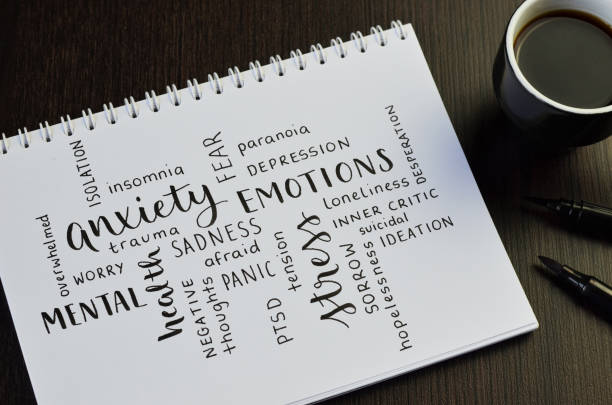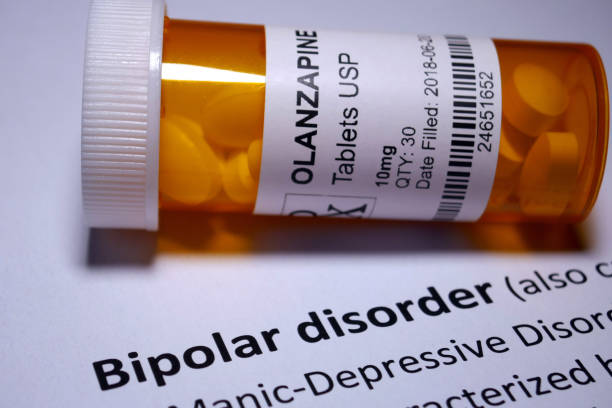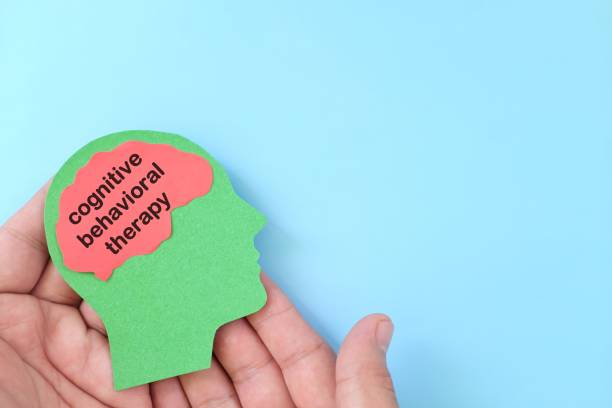Mental Well-Being
Bipolar Disorder and Symptoms
Bipolar disease is a complicated and frequently misunderstood mental illness that affects millions of people around the world. Extreme mood fluctuations characterize it, ranging from bouts of profound despair to episodes of increased mood and activity known as mania. These mood swings can have a significant impact on a person’s day-to-day life, relationships, and overall well-being.
In this article, we will delve into the complexities of bipolar disorder, investigating its causes, symptoms, and treatment choices. We’ll also address common misconceptions about the condition and provide useful information for both people living with bipolar disorder and their loved ones.
Understanding bipolar disorder is essential for appropriate treatment and care. We can assist decrease stigma and creating a more compassionate and inclusive atmosphere for individuals affected by learning more about the disorder’s numerous facets. Join us as we delve into the complexities of bipolar disorder and shed light on this frequently ignored and misunderstood mental health disease.

What is Bipolar Disorder?
Manic-depressive illness, formerly known as bipolar disorder, is a mental health condition marked by significant mood changes. Individuals with bipolar disorder go through depressive episodes in which they feel excessively unhappy and hopeless, and they lose interest in activities they once enjoyed. They also have mania or hypomania episodes, during which they feel unusually energized and euphoric and may engage in impulsive actions.
It is critical to understand that bipolar disorder differs from the regular ups and downs of life. Individuals suffering from bipolar disorder undergo extreme mood fluctuations that can linger for weeks or even months. These mood swings can seriously impair a person’s ability to function in areas such as jobs, relationships, and self-care.

Types of Bipolar Disorder
Bipolar disorder is classified into several types, each characterized by the intensity and duration of mood episodes. The most common types of bipolar disorder include:
- Bipolar I disorder: This kind includes manic episodes that persist for at least seven days or are severe enough to necessitate hospitalization. Depressive episodes lasting at least two weeks are also possible.
- Bipolar II disorder: Individuals with this type have depressive episodes comparable to those seen in bipolar I disorder. Manic episodes, known as hypomania, are less severe and last less time.
- Cyclothymic disorder: Cyclothymic disorder is distinguished by multiple episodes of hypomanic and depressive symptoms that last at least two years. The symptoms, however, are not as severe as those observed in bipolar I or II disorder.

Symptoms of Bipolar Disorder
The symptoms of bipolar disorder can vary widely between individuals and can manifest differently during manic and depressive episodes. Here are some common symptoms associated with each phase:
Manic episode symptoms:
- Elevated mood and extreme happiness
- Grandiose beliefs and inflated self-esteem
- Increased energy levels and restlessness
- Racing thoughts and rapid speech
- Impulsive and risky behaviors
- Decreased need for sleep
Depressive episode symptoms:
- Persistent sadness, hopelessness, or emptiness
- Loss of interest in previously enjoyable activities
- Changes in appetite and weight
- Fatigue or loss of energy
- Difficulty concentrating or making decisions
- Thoughts of death or suicide

Causes of Bipolar Disorder
Not everyone knows the exact cause of bipolar illness. However, study shows that a mix of genetic, biological, and environmental factors play a role in its development. Here are some possible reasons and risk factors:
- Genetic factors: People who have a family history of bipolar disorder are more prone to develop the disorder themselves. However, having a family history of bipolar disorder does not guarantee the development of the disorder.
- Chemical imbalances: Bipolar disorder may be caused by imbalances in specific brain chemicals, such as neurotransmitters like serotonin and dopamine. These imbalances can have an impact on mood regulation and stability.
- Environmental triggers: Stressful life events, such as trauma, loss, or major life changes, can precipitate the onset of bipolar disease in people who are genetically predisposed to it. Substance misuse and sleep disorders may also play a role in the development or severity of symptoms.

Diagnosing Bipolar Disorder
A thorough review of an individual’s symptoms, medical history, and family history is required to diagnose bipolar disorder. A mental health specialist, such as a psychiatrist or psychologist, will undertake a thorough assessment to establish whether the symptoms are consistent with bipolar illness.
The diagnostic process may include:
- Clinical interview: The mental health expert will inquire about the individual’s symptoms, including their duration and severity. They may also inquire about your family history, medical history, and any recent life events that may have played a role.
- Mood charting: Maintaining a mood chart or diary can assist in tracking and recording mood variations, sleep patterns, and other pertinent information. During the diagnosis procedure, this can provide significant insights for both the individual and the healthcare provider.
- Psychological evaluation: To acquire further information about the individual’s mental health and functioning, the mental health professional may perform numerous psychological evaluations and questionnaires.
- Medical evaluation: To rule out any underlying medical disorders that may be causing or exacerbating the symptoms, a physical examination and blood tests may be performed.
Once a diagnosis has been made, the healthcare professional will collaborate with the individual to develop a treatment plan that is tailored to their specific needs and preferences.
Treatment options for bipolar disorder
Bipolar disorder is a chronic illness, but with correct treatment and management, people can live full and productive lives. Medications, therapy, and lifestyle modifications are usually part of the treatment regimen. It should be noted that treatment plans may differ based on the kind and severity of bipolar illness.

Medications for Bipolar Disorder
Medications are frequently used to assist in stabilizing mood swings and managing the symptoms of bipolar disorder. Among the most widely used drugs are:
- Mood stabilizers: These drugs aid in mood regulation and the prevention of excessive swings between mania and depression. Mood stabilizers such as lithium, valproate, and carbamazepine are routinely used in the treatment of bipolar illness.
- Antipsychotics: During manic or depressive episodes, atypical antipsychotic medicines may be administered to assist in managing symptoms. These drugs can help minimize bipolar disorder-related hallucinations, delusions, and other psychotic symptoms.
- Antidepressants: These medications may be prescribed by healthcare experts in some circumstances to alleviate depressive symptoms. However, antidepressant usage in bipolar disorder is closely controlled to avoid causing manic episodes.

Therapy for Bipolar Disorder
Therapy is an important part of treating bipolar disorder because it can help people better understand and control their condition. Some successful treatments for bipolar disorder include:
- Cognitive-behavioral therapy (CBT): The goal of CBT is to identify and change unfavorable thought patterns and behaviors that contribute to mood swings and emotional pain. It can also assist individuals in developing appropriate coping techniques for stress management and relapse prevention.
- Psychoeducation: Learning about bipolar disorder, its symptoms, and triggers is part of psychoeducation. It assists individuals and their loved ones in gaining a better knowledge of the condition, improving self-awareness, and adhering to treatment programs.
- Interpersonal and social rhythm therapy (IPSRT): IPSRT focuses on restoring daily patterns and sleep-wake cycles, which can aid with mood regulation and the prevention of relapse. It also addresses interpersonal difficulties and improves communication skills in order to strengthen relationships.

Lifestyle Changes for Managing Bipolar Disorder
Aside from medication and therapy, several lifestyle adjustments can considerably aid in the overall management of bipolar disease. These modifications include:
- Establishing a routine: Maintaining a steady daily routine can aid in mood stabilization and the prevention of mood fluctuations. This includes normal sleep habits, food, and physical activity.
- Getting regular exercise: Regular physical activity, such as walking, jogging, or yoga, can help alleviate sadness and anxiety symptoms. Exercise also enhances sleep quality and increases general well-being.
- Managing stress: Individuals with bipolar disorder may have mood swings as a result of stress. Stress can be reduced by learning efficient stress management techniques such as meditation, deep breathing exercises, and time management skills.

Living with Bipolar Disorder: Tips and Support
Living with bipolar disorder can be difficult, but with the correct support and methods, people can manage their condition successfully. Here are some suggestions for coping with bipolar disorder:
- Educate yourself: Learn everything you can about bipolar disorder, including its symptoms and treatment options. Understanding your illness allows you to participate actively in your own care.
- Build a support network: Surround yourself with helpful and empathetic people who can offer emotional support and encouragement. Family members, friends, support groups, and internet communities are examples of this.
- Practice self-care: Make self-care activities that boost your overall well-being a priority. This could involve indulging in hobbies you enjoy, practicing mindfulness or relaxation techniques, and scheduling time for yourself as necessary.
- Stay consistent with treatment: Follow your treatment plan consistently, including taking prescribed medications as directed and attending therapy sessions. Communicate openly with your healthcare team about any concerns or side effects.
- Monitor your moods: Keep track of your moods, symptoms, and any triggers that may impact your mental health. This can help you identify patterns and make necessary adjustments to your treatment plan.
- Have a crisis plan: Maintain adherence to your treatment plan, which includes taking prescribed medications as instructed and attending therapy sessions on a regular basis. Discuss any concerns or side effects with your healthcare provider openly.
Conclusion
The article stresses how complicated bipolar illness is and how its extreme mood swings are what make it unique. It is important to be fully aware of the disorder, including its causes, symptoms, and possible treatments. This is emphasized by the call to fully understand the disorder.
This article calls for a change in how people think about bipolar illness so that it is less of a social stigma. The goal is to make the world a more caring and accepting place for people who are dealing with this often misunderstood disease by promoting understanding.


